Neuropsychologist in neuropsychological rehabilitation Regina González de Cossío Sieiro explains in this article what post-concussion syndrome is and its proper rehabilitation neuropsychological.
“You will be as good as new in a few days.” “It’s not that bad.” “Why don’t you go out with us anymore?” “Your MRI results are normal, you don’t have anything.” “You’re just depressed.”
We are accustomed to underestimating the seriousness of a concussion. We believe it is normal to experience a headache after the blow, to lose consciousness or to be confused for a couple of days.
With this article I would like to raise the reader’s awareness about how hard it can be to live with post-concussion syndrome and offer professionals a glimpse into the neuropsychological rehabilitation of this complex and in many ways disabling syndrome.
What is post-concussion syndrome?
A concussion is the result of a mild traumatic brain injury, which can be the result of a fall, a traffic accident, a collision while practicing a sport, or, indirectly, from a sudden, forceful shaking movement of the head relative to the body.
The loss of consciousness typically associated with traumatic brain injuries is not an indispensable requirement to suffer a concussion (contrary to common belief).
In fact, the risk of developing post-concussion syndrome is not linked to the severity of the injury. Rather, risk factors are related to a prior history of concussions, being female, younger age, suffering from migraines or mood disorders.
Symptoms associated with post-concussion syndrome
1. Somatic symptoms
A concussion produces a series of somatic symptoms:
- headache,
- dizziness,
- vertigo,
- fatigue,
- difficulty maintaining balance,
- hypersensitivity to light and/or noise, sleep disturbances
2. Cognitive symptoms
- concentration problems
- attention difficulties
- memory problems,
- slowed information processing
- executive dysfunction.
3. Affective symptoms:
- irritability,
- depression,
- anxiety
- confusion
These symptoms last from 7 to 10 days and disappear on their own in most cases. However, when these symptoms last more than three months (which happens in 30% of cases), it can be said that the person suffers from post-concussion syndrome which can significantly compromise their quality of life and requires a multidisciplinary approach.
A functional impairment
Post-concussion syndrome is not a structural brain injury, but a functional impairment. In other words, it is an invisible brain injury. At first glance, the person suffering from post-concussion syndrome appears normal: they can walk, talk, study, work. No one would imagine they are having a hard time.
Personally, I like to compare this syndrome to a business on the brink of bankruptcy. Walking past you will see the lights on and employees working. Everything seems to be going well. But even though all the elements necessary for a business to exist are present, it does not necessarily mean the business is doing well.
There may exist significant failures in communication between employees or between departments; the system may be inefficient or hacked, expenses may exceed income, and countless other problems may jeopardize its success.
Similarly, the fact that all areas of the brain seem normal after a concussion (as is often the case when observing neuroimaging tests) does not mean these areas are working well together, nor that they are allowing the brain functioning and communication necessary for the person to function optimally in daily life.
How can post-concussion syndrome be detected?
Thus, post-concussion syndrome is not detected through traditional neuroimaging tests because brain tissue is not obviously or visibly damaged, as is often the case when observing the neuroimaging of a brain tumor or a stroke.
What recent research has discovered regarding post-concussion syndrome is that the structural integrity of neurons appears preserved (which is why no alterations are observed in neuroimaging), however, what has been damaged is the neurons’ ability to signal the blood vessels the appropriate amount of blood they need to carry out their activity.
That is, the communication patterns that exist between neurons and the cerebral arteries that supply them with the nutrients necessary for their optimal functioning are altered, and when this inefficiency in communication and the consequent inflammation are not resolved spontaneously after a few days or weeks, the dysfunction continues causing symptoms that last months or even years.
Misunderstanding: an emotional injury
The life of someone suffering from post-concussion syndrome is, in many ways, more difficult. Headache, dizziness, hypersensitivity, sleep disturbances, fatigue and cognitive difficulties make their daily activities extremely challenging.
The above markedly reduces their quality of life, as it ends up restricting their activities. The person is no longer able to do everything they used to do or to do it as well or as quickly as they once did.
Simple and pleasurable activities such as meeting friends at a bar or going to the movies become torture for someone with post-concussion syndrome. High noise levels and excessive visual stimulation can worsen their headache, light sensitivity and blurred vision.
They may also find it difficult to follow the plot of a movie, remember character names and participate in conversations with friends due to the cognitive difficulties they present.
Therefore, little by little, they make changes to their lifestyle, withdraw from their social networks and isolate themselves, since they cannot tolerate the cognitive demands of social, work or academic life,.
In addition to the difficulties inherent to the syndrome, the lack of understanding and visibility of post-concussion syndrome in society often causes affected people to experience high levels of frustration, anger, or even develop anxiety or depression.
“Nobody believes me”, “nobody understands me”, are usually the most repeated complaints, since, at first glance, they seem perfectly fine. Therefore, psychotherapy should be part of their multidisciplinary treatment.
The never-ending syndrome
To make matters worse, the symptoms of post-concussion syndrome often complicate each other. For example, headaches can make it difficult for the person to fall asleep, and insomnia will likely make the headache and fatigue the next day worse.
This will undoubtedly impact cognitive functioning and emotional state, making the snowball bigger and bigger…
But not all is bad news. An appropriate process of multidisciplinary neurorehabilitation can help treat and manage the symptoms of post-concussion syndrome in order to achieve that the person resume their activities and pace of life satisfactorily.
Self-knowledge: the key to success
The key piece in the treatment of post-concussion syndrome is self-knowledge. As the person is able to identify the onset and evolution of their symptoms, as well as the factors that aggravate them, it becomes possible to begin preventing or alleviating them, either by avoiding or limiting certain experiences or situations.
From the neuropsychology field it is important to guide the patient so that they can plan and organize each day taking into account their new limitations.
Tasks that require a high cognitive load must be distributed and specific times for rest during them designated, as well as setting aside time to exercise, leisure time, etc.
Exercise: restoring connections
One of the best allies in the treatment of post-concussion syndrome is aerobic exercise. It should be remembered here that post-concussion syndrome is caused by a dysfunction in the communication of neurons with the blood supply that gives them the nutrients they need to work.
Research has shown that aerobic activity increases oxygen delivery to the brain and raises levels of certain neurotransmitters and proteins such as BDNF (brain-derived neurotrophic factor) that promote synaptic regeneration.
In this way, aerobic exercise prepares the brain to face cognitive challenges and provides it with the nutrients it needs to carry them out, resulting in a notable improvement in cognitive performance after a session of moderate aerobic exercise.
However, it must be a sub-symptomatic exercise, that is, one should never cross the threshold at which somatic or cognitive symptoms begin to appear or become more intense.
Vestibular and visual rehabilitation
Another pillar of the treatment of post-concussion syndrome is vestibular and visual rehabilitation.
Vestibular dysfunction (dizziness, loss of balance, vertigo, hypersensitivity to movement, spatial disorientation) and visual problems (double vision, blurred vision, difficulty with visual tracking, poor hand-eye coordination, and deficient peripheral vision) are common symptoms of post-concussion syndrome, and often underlie headaches, intolerance to light or screens, fatigue, etc.
Therefore, a main goal of rehabilitation is to achieve that the patient’s vision is clear and stable during head movement through gaze stabilization exercises.
Gradually, these exercises are carried out together with certain movements and rocking on a Bosu-type ball or on an unstable surface.
NeuronUP exercises to rehabilitate post-concussion syndrome
Some NeuronUP exercises that I find very useful to rehabilitate these dysfunctions are:
- Copy number matrices,
- Text comparison,
- Hidden Letters
- Fast Numbers.
Neuropsychological rehabilitation of post-concussion syndrome
Neuropsychological rehabilitation of post-concussion syndrome should begin with a neuropsychological evaluation that can guide treatment, always bearing in mind that with rehabilitation, we are not seeking to improve the patient’s score on standardized tests, but rather that their improvements translate into functionality, into the ability to face their daily life more satisfactorily and independently.
Rehabilitation of attention and processing speed
One of the most disabling and frustrating symptoms for patients with post-concussion syndrome is slowed processing. High variability in their reaction times or responses on neuropsychological tests is also frequently observed.
Slowed processing is often also described as brain fog and appears as the demands of a task increase.
People with post-concussion syndrome experience it especially in social situations where noise and sensory stimulation in the environment are very high, when they read for prolonged periods or work on the computer.
It should be taken into account that the brain of a person with post-concussion syndrome works much more slowly and requires more time and energy to complete tasks that might seem simple to us.
I like to explain to my patients that slowed processing is like having to drive after a hurricane. The streets are flooded, traffic lights may not work, some signs and trees will have fallen so your preferred route may be blocked.
All of the above will make a trip that usually took them 5 minutes now take an hour, a lot of energy and hypervigilance. The same happens with the brain in post-concussion syndrome.
Memory rehabilitation
Many patients with post-concussion syndrome present short-term memory difficulties, such as forgetting the names of new people, the grocery list, where they put their keys or phones, forgetting conversations, appointments and commitments. Memory rehabilitation is like training a muscle.
With increasingly complex exercises (preferably with relevant and ecological content such as the news, relevant readings, or the shopping list) we work on encoding, storage with association or grouping strategies and short- and long-term retrieval with cues to thus improve their memory capacity and quality.
However, while the muscle gains strength, it is also necessary to offer these patients tips and strategies to remember information.
At the beginning of rehabilitation they will probably have to be guided to compensate for their memory difficulties with external aids using planners and alarms to remember appointments and other commitments or taking notes in conversations or classes together.
Another difficulty of post-concussion syndrome is working memory, evidenced by problems maintaining and manipulating information in short-term memory, such as keeping track of a conversation or mentally totaling the amount to pay at the supermarket as items are taken.
There are many activities and exercises to train working memory. In particular, I like to work in NeuronUp with: Ordered Post-its, Sort the words alphabetically and Color Lottery.
Rehabilitation of executive functions
With regard to executive functioning, people who suffer from post-concussion syndrome may have difficulties in planning, problem solving and verbal fluency.
In this sense, rehabilitation incorporates exercises that put deductions, planning and cognitive flexibility into practice, such as puzzles, Sudokus, Scrabble, etc as well as verbal fluency tasks that can
help also to improve processing speed.
Some of the NeuronUP activities that I use are:
- Bottle Caps with letters: I also ask them to say a word from different semantic categories with each letter they press
- Form words by combining letters,
- Form sentences.
In conclusion, post-concussion syndrome is a pathophysiological process that affects the brain after a direct or indirect trauma.
It is a functional injury with important somatic, cognitive and affective symptoms that compromise the person’s quality of life and that requires a multidisciplinary approach, including timely neuropsychological rehabilitation.
Bibliography
- Bramley, H., Hong, J., Zacko, C., Royer, C., and Silvis, M. (2016). Mild Traumatic Brain Injury and Post-concussion Syndrome. Treatment and Related Sequelae for Persistent Symptomatic Disease. Sports Med Arthrosc Rev, 24 (3).
- Connery, A., Peterson, R., Baker, D., Randolph, C. and Kirkwood, M. (2016). The Role of Neuropsychological Evaluation in the Clinical Management of Concussion. Phys Med Rehabil Clin N Am 27, 475 – 486.
- Dwyer, B. and Katz, D. (2018). Post Concussion syndrome. Handbook of Clinical Neurology, 158. Sports Neurology.
- Hadanny, A. and Efrati, S. (2016): Treatment of persistent post-concussion syndrome due to mild traumatic brain injury: current status and future directions. Expert Review of Neurotherapeutics.
- Origenes, A., Alleva, J., and Hudgins, T. (2019). Concussion rehabilitation/post concussion syndrome.Disease-a-month, 65.
If you liked this article about post-concussion syndrome, you may also be interested in the following articles:
“This article has been translated. Link to the original article in Spanish:”
El síndrome posconmocional y la rehabilitación neuropsicológica
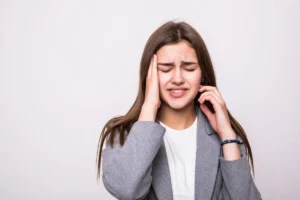

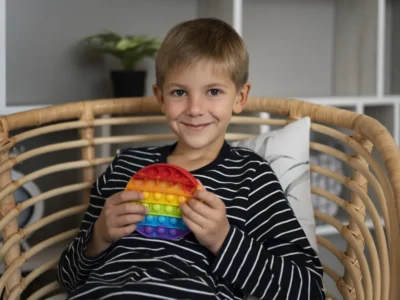
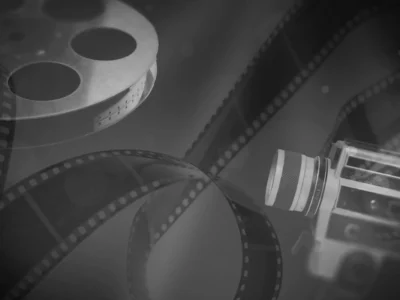
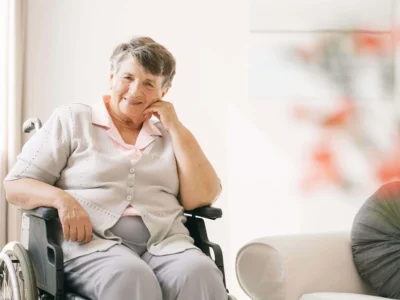

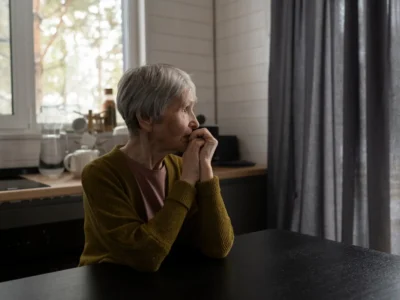
 Worksheet for working on semantic memory in children: What is Each Thing Like?
Worksheet for working on semantic memory in children: What is Each Thing Like?
Leave a Reply